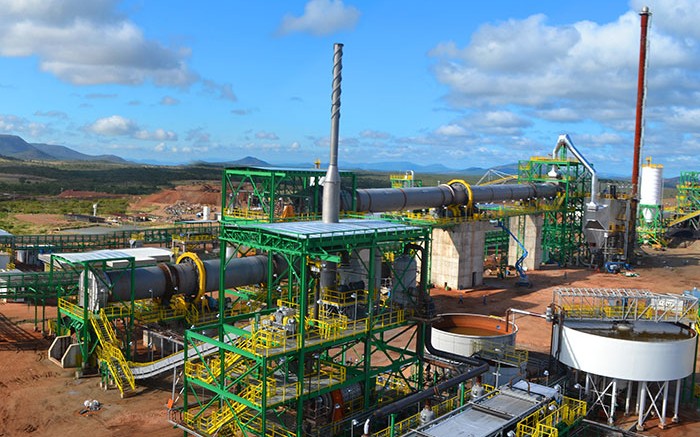For Anglo Pacific Group (TSX: APY; LSE: APF), royalty income in the first half surpassed all of the royalty income earned last year. And while the company posted an after-tax loss for the six months ended June 30, it was a much smaller one than a year earlier.
“We’ve turned the corner and have ever-stronger growth ahead of us, until at least 2017,” Julian Treger, the company’s president and CEO, said in an interview from London.
The group has seen higher royalty revenue despite a decline in commodity prices, and is keeping costs under control, he said, adding the trend suggests 2014 should be the low point for Anglo Pacific’s royalty income.
In the first half of 2015, royalty income surged to £3.8 million in a 48% increase from the £2.6 million Anglo Pacific posted in the same period last year, while after-tax losses fell from £23 million to £8.8 million.
Higher royalties were largely driven by new sources of income acquired in the last 18 months from Whitehaven Coal’s (US-OTC: WHITF; ASX: WHC) Narrabri North coal mine in New South Wales, Australia, and Largo Resources’ (TSXV: LGO; US-OTC: LGORF) Maracas vanadium mine in Brazil.
Narrabri produced 4.9 million tonnes of coal, up from 2.4 million tonnes in the same period of 2014, exceeding Anglo Pacific’s estimates at the time it acquired the royalty for US$65 million in February. The acquisition was completed in March, but Anglo Pacific received royalty income starting from Jan. 1.
In Brazil, Maracas continued its production ramp-up during the period, and achieved record monthly production of 487 tonnes of vanadium in May — the highest level since production started in August 2014. Anglo Pacific acquired a 2% net smelter return royalty on all mineral products sold from Maracas for US$22 million in June 2014.
Meanwhile, Anglo Pacific benefitted from strong royalty income from Rio Tinto’s (NYSE: RIO; LSE: RIO) Kestrel mine in Queensland, Australia, which produces hard coking coal and thermal coal. Kestrel churned out 2.3 million tonnes in the first half of 2015, in a 42% increase from the 1.6 million tonnes it produced in the same period in 2014.
Based on Rio Tinto’s production forecasts for Kestrel, 50–55% of total production this year will be within Anglo Pacific’s royalty paying lands — most of which will accrue in the second half of the year — and Treger expects this will increase to 60–65% in 2016 and to 90% in 2017. “That should bake in a lot of growth,” he says, despite lower commodity prices.
“The first six months of 2015 have been encouraging … and the outlook for the remainder of 2015 is equally encouraging,” Treger says.
As a royalty company, he adds, Anglo Pacific is shielded from some of the worst effects of the current downturn. “We’re not immune to that, and our royalty income would have been higher if prices were better, but we’re better positioned than some of the other companies,” he says, adding that Anglo Pacific has benefitted in some jurisdictions from the U.S. dollar’s appreciation against local currencies.
He says the flip side of the downturn is that “almost all companies are needy of funding — other than perhaps BHP Billiton or Rio Tinto — so we’ll be trying to see if we can engage with some of the higher-quality counterparties to see if we can provide funding for them and alleviate their stressed balance sheets.
“We have very little debt and a much less risky income line compared to the mining companies, so we’re not squeezed as much when commodity prices decline,” he continues. “Being a royalty company is a more resilient model in these circumstances.”
Anglo Pacific ended the first half with £1.2-million net cash and a £16.2-million undrawn revolving credit facility.
Analysts at Investec Securities in the U.K. say that the financial results showed “good improvement” and “an encouraging earnings outlook.”
Looking ahead, Treger says the company is “keen to do more” acquisitions, but will take a disciplined apporach.
He says that “it’s easy to spend money in the sector, as we all know. We think there will be more opportunities given we are effectively a financier to a distressed sector, and people will see our royalties as quite an attractive funding mechanism, compared to the alternatives they have.”
Despite the gloomy outlook for coal, Treger emphasizes that Anglo Pacific’s royalties are on “high-quality clean coal with less impurities” that not only command a premium, but will be sought after and valuable as a percentage of global energy production, as countries grapple with meeting pollution controls.
“The world isn’t going to move away from coal,” he says. “If you have high-quality premium coal that will be increasingly valuable, while sulphurus and dirty coal will be increasingly taxed. If you have the right type of coal you should be fine.”
Narrabri, for instance, produces low ash (12%), low sulphur (0.5%), low phosphorus, high-energy export thermal coal and mid-volatile pulverized coal injection coal.


Be the first to comment on "Anglo Pacific has ‘turned the corner,’ CEO says"